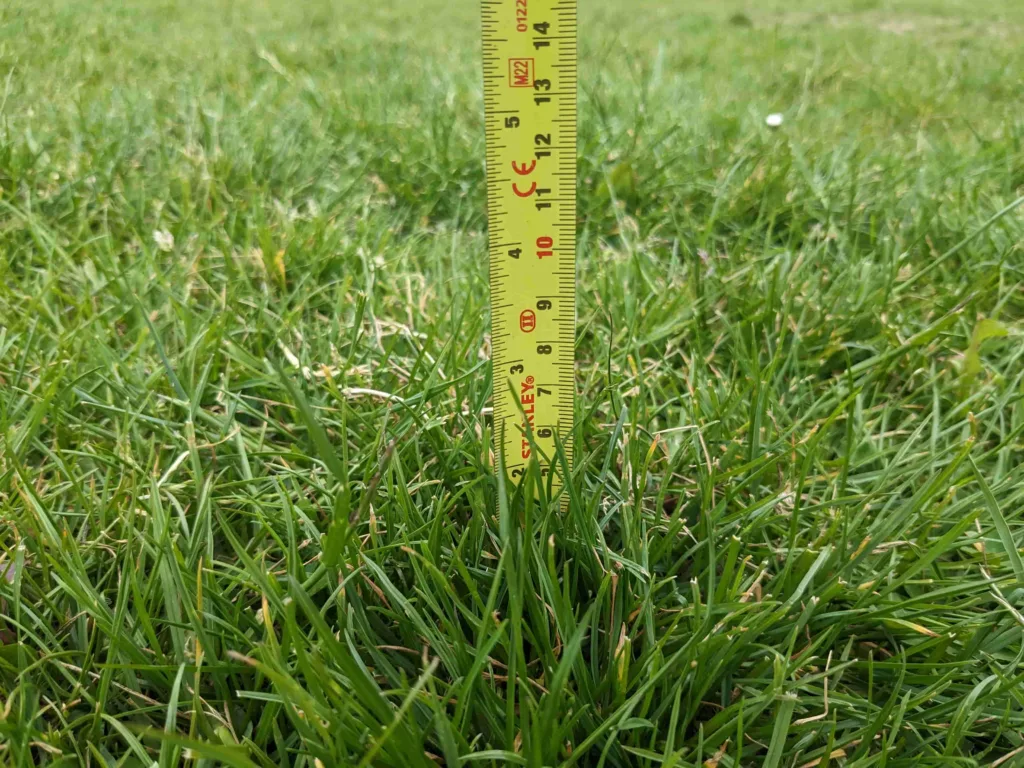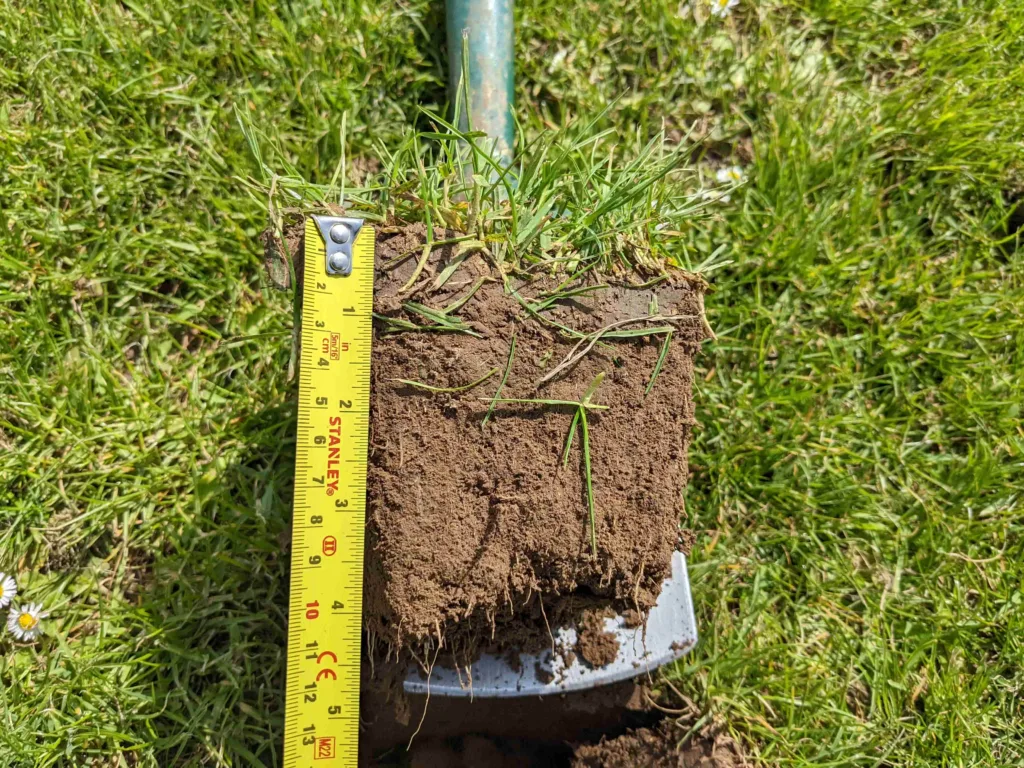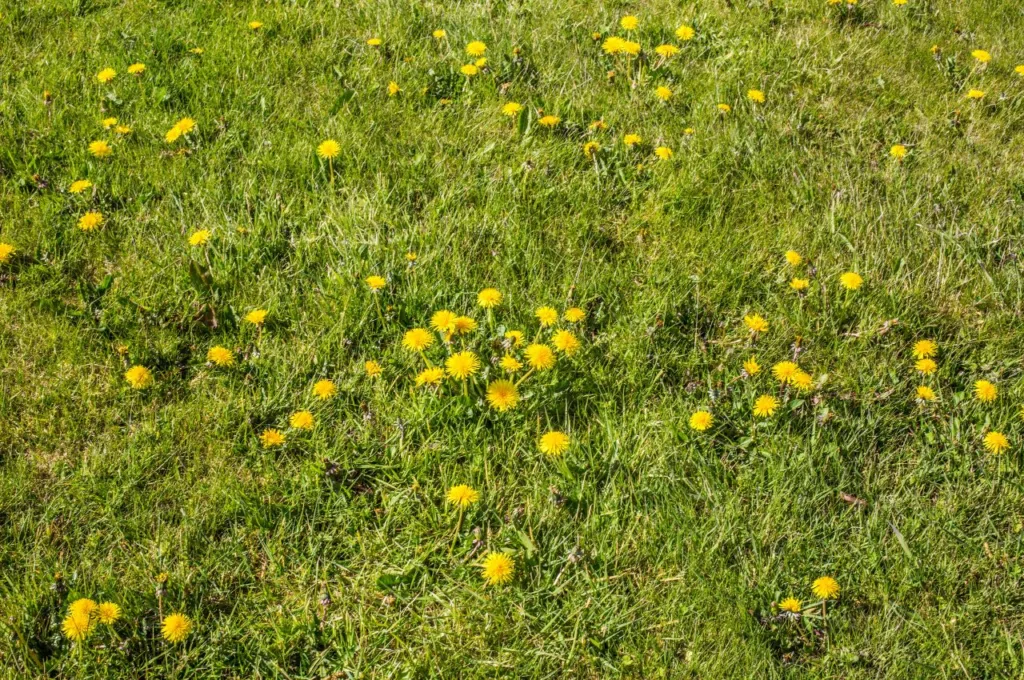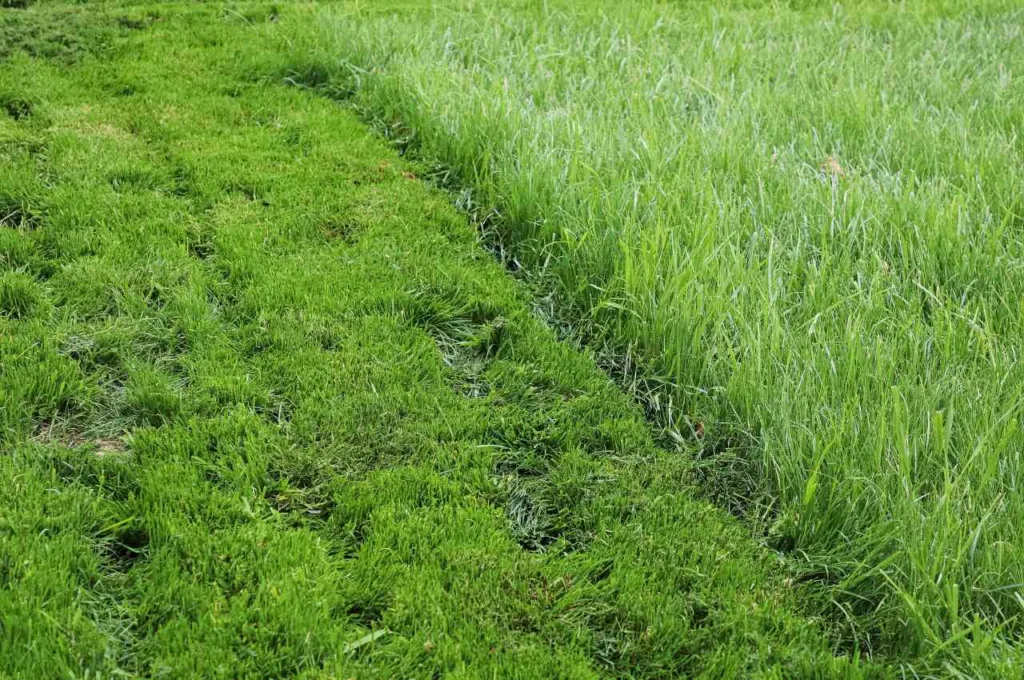If you’re interested in mowing to sustain a healthy, green lawn, you might have heard of the one-third rule.
Here, we’ve answered the common question, “What is the one-third rule for lawn mowing?” We’ve also discussed why the one-third rule is beneficial and explained how to adopt the one-third rule when mowing your lawn.
✅Key Takeaways:
The one-third mowing rule dictates that you shouldn’t mow more than one-third off the total height of the grass.
Cutting too much off your grass in one go will cause it to become stressed and more susceptible to weed infestation, disease, and drought.
To mow your lawn following the one-third rule, measure your original grass height, then set your mower height accordingly to only mow one-third off the grass blades.
Table of Contents
📏 What Is The One-Third Rule For Mowing Grass?
The one-third rule for mowing grass is a guideline that suggests you shouldn’t mow more than a third of the original grass height.
This rule emphasizes the importance of maintaining a suitable mowing height for your lawn. So, when you mow your grass, you should aim to remove only the top one-third of the grass blade length, leaving the remaining two-thirds intact.
Let’s say your grass is 6cm tall. In this case, according to the one-third rule, you shouldn’t remove any more than 2cm of the leaf tissue in one go.
To apply the one-third rule when mowing your lawn, start by measuring your grass and determining the ideal mowing height, then adjust your mower deck so you only cut one-third of the total height of the grass.
We’ve discussed two different ways to accurately mow one-third off your grass later in this guide.

🧐 Why Should You Only Mow One-Third Off Your Grass?
We understand the temptation to mow your grass short. It gives your lawn a neater, carpet-like appearance and reduces how often you need to get the mower out.
However, letting your grass grow long before cutting more than one-third off the original blade height is a terrible idea if you want to maintain a green, healthy lawn.
The one-third rule is based on our knowledge that grass derives a significant amount of energy through photosynthesis, which primarily occurs in the leaf blades. When you adhere to the one-third rule, you ensure that enough leaf surface area is left on each grass blade after mowing to allow for continued photosynthesis and healthy growth.
The whole point of the one-third rule is to avoid cutting grass too short, since this can have detrimental effects on the overall health and appearance of your lawn.
When grass is cut too low, it becomes stressed and more susceptible to weed infestation, disease, and drought. Plus, cutting too much of the grass blade in one mowing operation can shock the grass plant and inhibit root development.
By following the one-third rule, you allow the grass to maintain enough leaf surface area, which enables it to produce the energy needed for healthy growth – key to a resilient lawn. It also helps to establish a dense turf, which can prevent weed growth by shading out potential invaders.
📑 4 Advantages Of The One-Third Rule
Let’s take a look at the 4 advantages of following the one-third rule from a lawn care perspective:
🌱 Promotes Healthy Grass Growth
Maintaining an appropriate mowing height allows your grass to maintain a larger leaf surface area, which encourages efficient photosynthesis. This, in turn, helps your lawn to produce enough energy for sustained and healthy growth, helping to promote overall lawn health.
When your grass grows consistently and healthily, it fills in bare spots and outcompetes weeds for soil space, further improving your lawn health.
⚓️ Enhances Root Development
The one-third rule ensures that enough of the grass blade is left intact after mowing, which means the grass plants can sustain a proper root-to-shoot ratio.
Your grass needs strong root systems to support health growth, improve its resistance to foot traffic and harsh weather conditions (i.e. the UK’s freezing winters and random summer heatwaves), and enhance its ability to absorb water and nutrients from the soil.
Well-developed roots anchor grass into the soil, making your lawn more resilient to environmental stresses.

💃 Improves Overall Lawn Appearance
By consistently following the one-third rule when mowing your lawn, you can enjoy the aesthetic benefits of a neatly trimmed lawn with an even, uniform appearance.
Maintaining an appropriate mowing height helps you create a lush and manicured aesthetic. Healthy grass is vibrant and thick, rather than brown and sparse. Adopting the one-third rule is a step towards achieving the lawn of your dreams.
☘️ Reduces Weed Infestation And Disease Susceptibility
Finally, adhering to the one-third rule and avoiding cutting your grass too short shades the soil, making it more challenging for weed seeds to germinate.
Plus, it encourages healthy grass growth, which helps to choke out existing weeds and prevent new ones from establishing.
Longer grass blades also provide a physical barrier against certain diseases, which again promotes a healthy lawn.

🤷♂️ How To Accurately Mow One-Third Off Your Grass
There are a couple of different ways to mow one-third off your grass, depending on how precise you want to get:
📐 The Precise Method
The precise method is if you want to be really specific with your grass cutting and your mower has a good number of height settings that you can switch between.
Here’s what to do:
Gather your tools. You’ll need a ruler or a tape measure and your lawn mower.
Measure the height of the grass in two or three sections of your lawn. Take an average of these measurements.
Adjust your lawn mower’s cutting height to ensure you don’t mow more than one-third off the measured grass height.
🤏 The Wing-It Method
Don’t want to step out onto your lawn with a tape measure? Or haven’t got time for that level of precision? The wing-it method is probably best for you.
Follow these steps:
Visually inspect your lawn and estimate its height.
Retrieve your mower from storage and adjust the cut height based on your estimated grass height.
Choose a small test area and mow at the selected height. Compare the height of the mown grass to the uncut grass next to it.
Continue mowing if you’re happy with the cut height, or adjust the mower height again to get it right.
Remember, it’s best to start with a higher setting than go too low and cut too much off your grass in one go.

🤨 Should You Apply The One-Third Rule If Your Grass Is Overgrown?
If your lawn is overgrown, you might be wondering whether you can bypass the one-third rule as a one-off, since mowing just one-third off the top of long grass probably won’t make it as short as you need it.
However, you should still apply the one-third rule if your grass is overgrown, for all the reasons outlined above.
Our advice is to mow your lawn following this rule, then give your grass a break for a couple of days before mowing another third off the new height. Repeat this as many times as necessary to bring your grass down to “normal” height (around 2.5-4cm tall).
🏁 Final Word
The one-third rule is one of the first steps towards sustaining a healthy, green lawn that’s less likely to have problems with yellow/brown patches and weed growth.
However, adopting this rule doesn’t instantly guarantee a pristine lawn. There are other lawn care practices that you’ll need to implement, too, including sharpening your mower blades, watering your lawn as and when necessary (only during dry summers in the UK), managing soil drainage, and fertilising your lawn with the best lawn feed for the season.
There’s a lot that goes into lawn care and maintenance. If you’re ready to commit to an annual lawn maintenance schedule, take a look at our Expert’s Guide To Essential Lawn Maintenance, written specifically for UK lawns.
❕❓ FAQ:
How tall should my grass be before I cut it?
Ideally, your grass should be around 5-7cm before you cut it. That means you should cut around 1.5-2.3cm off the grass blades if you’re adopting the one-third rule. No need to be super precise – just make sure you don’t cut more than a third off the grass in one mow.
Can I cut more than one-third off my original grass height if I mow in two rounds?
Yes, you can cut more than one-third off your original grass height by mowing in two rounds – removing a third in the first round, and another third in the second round. However, we recommend leaving at least a couple of days between each mowing round to prevent your grass from becoming stressed by its sudden lack of leaf coverage.
Does the one-third rule apply to all grass types?
Yes, the one-third rule applies to all grass types in the UK. Whether you have perennial ryegrass, red fescue, Kentucky bluegrass, annual meadowgrass, or a combination of these grass types and other grass species, it’s best to only cut one-third off your grass to sustain healthy root growth and prevent the leaf tips from turning brown.
Will the one-third mowing rule prevent weed growth?
No, the one-third mowing rule won’t prevent weeds from growing – but it will reduce the likelihood of weed growth by promoting healthy grass growth. Grass and weeds compete for space on a lawn. When you mow less than one-third off your grass blades, you’ll encourage the grass to grow healthily and choke out weeds. On the other hand, if you cut too much off your grass and affect its ability to grow, the weeds on your lawn will begin to dominate the grassy areas.
